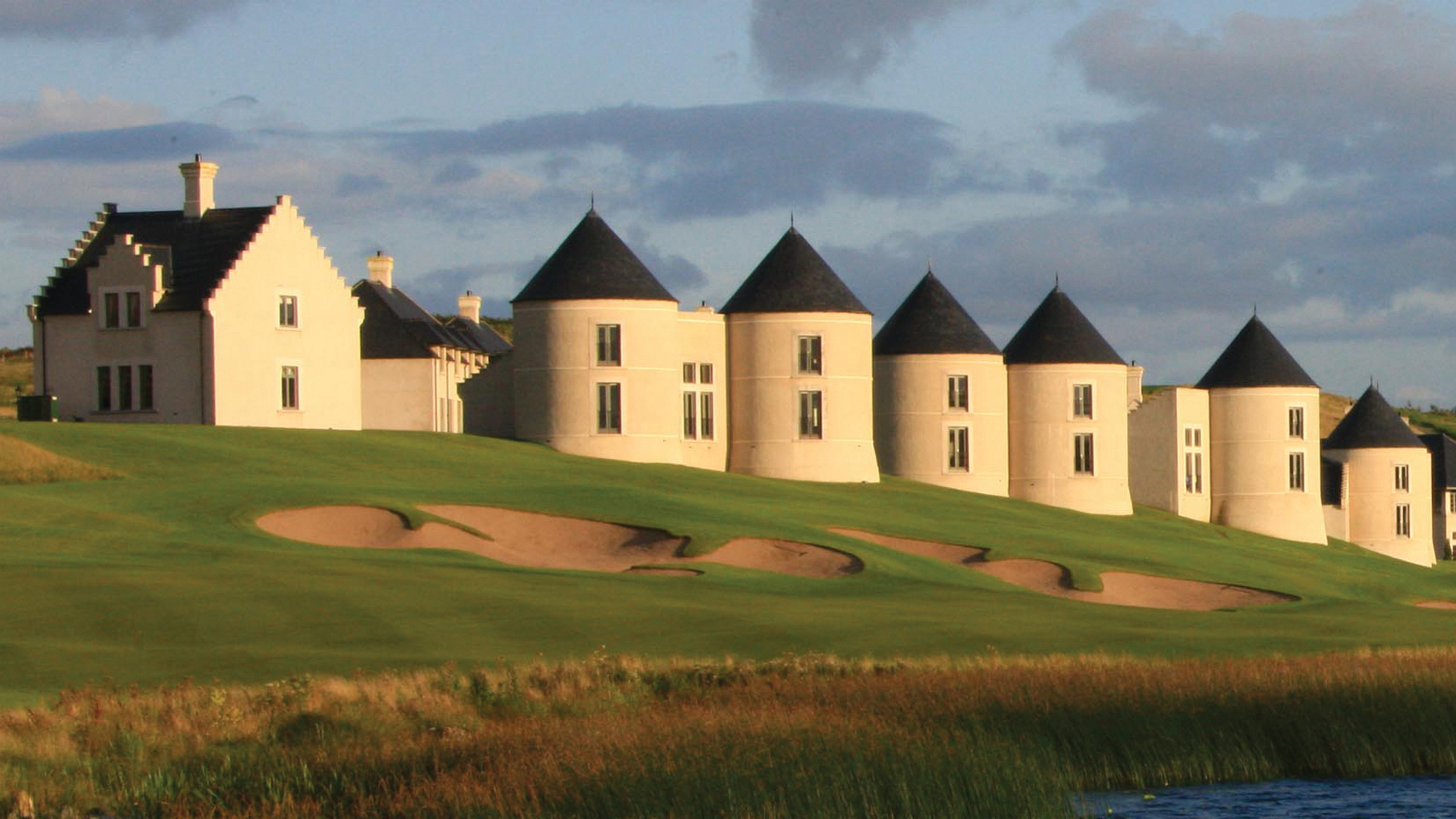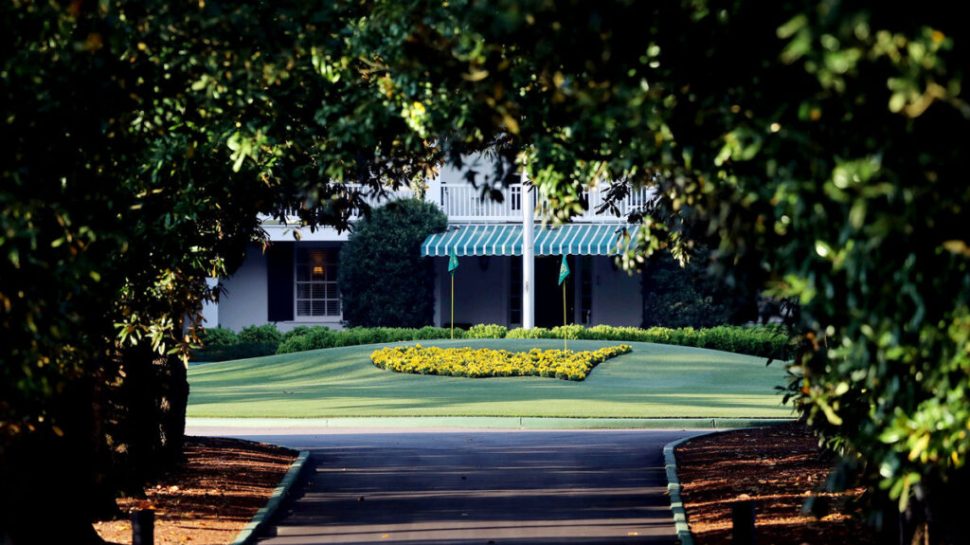
Estimated reading time: 21 minutes
The 85th edition of the Masters tournament commences Thursday -- a mere five months since the last get together when Dustin Johnson claimed his first green jacket with a virtuoso record setting 72-hole performance.
Once again, an assembled grouping of talented architects from different areas of the globe have been asked to weigh in on a variety of key topics tied to the event, the course design and other issues of importance. Augusta National is the only major championship contested at the same course each year and the awareness level of golfers worldwide is without peer.
The genesis of the club stems from its founder Bobby Jones -- one of the sport's most revered champions -- and the intersection with renowned architect Alister MacKenzie. Over the years, various changes have been carried out to the course. In the mind of long time Masters Chairman Clifford Roberts -- those changes were defined as "improvements."
The Masters returns to its traditional April time frame commencing golf's four major championships in 2021.
An enduring challenge, from tee to green.
— The Masters (@TheMasters) March 30, 2021
#themasters pic.twitter.com/ouhFJZn2q3
How do you think Bob Jones and Alister MacKenzie would view Augusta National today versus what they originally envisioned?
FULLER: The biggest surprise may be refinements in bunker shapes and edges and overall turf conditions, specifically green speed and impact on putting surface slope. I think they would appreciate the beauty of the frame -- the landscaping -- around the course edges.
MARZOLF: Proud of the tournament and amazed at the evolution of the property. Bob Jones and Alister MacKenzie helped create one of the greatest strategic courses in the world. The Masters homages the founding goals of Bob Jones and has been a hallmark of the club.
CLAYTON: Jones would be surprised, and likely perturbed, to find many view the Masters as being more important than either The Open or the U.S Open. They’d both be sad about the intrusion of trees onto the stage – as opposed to being a part of the scenery as Harry Colt once said of the role of trees. Jones once said to his friend, the British broadcaster Alistair Cooke as they looked down the 10th fairway “I don’t see any need for a tree on a golf course.”
MacKenzie would be dismayed the original 9th -- his 18th -- featuring a horseshoe green was changed because it gave players good reason to try and drive down the left. I’m not sure what he’d make of Robert Trent Jones' 16th, but I’ll bet his shorter version across the creek was a pretty good hole.
FRY: I think they would amazed by the quality of the turfgrass and playing conditions and thrilled at the reputation of the Masters and how much the tour pros and golf fans love the event.
CRAFTER: In some respects, they would be delighted the course is the subject of such focus today and challenge to the world’s best golfers; in other ways I suspect they would be shocked at how far course conditioning has come in the intervening years, but perhaps dismayed, Mackenzie more so than Jones, at how much tinkering has taken place on the course since.
If you could ask the design duo one specific question, what would it be?
FRY: I can only imagine how stunned they would be to see how dramatically things have progressed in turfgrass and maintenance practices and how much it has changed the way the course looks and plays.
CRAFTER: What did you learn from each other in your collaboration?
MARZOLF: The nines have been reversed since the course originally opened. What would Bob Jones and Alister MacKenzie think is the biggest improvement to the original design ?
CLAYTON: To Alister MacKenzie – you wrote in The Spirit of St Andrews, ‘It is often suggested that we have already got to the limit of the flight of the golf ball. I do not believe it as there is no limit to science’. Could you ever have imagined the current state of the game and how out of scale it is when compared with the game your contemporaries Bobby Jones and Walter Hagen played?”
FULLER: What was the relationship between construction contractor and them regarding supervision of the work?
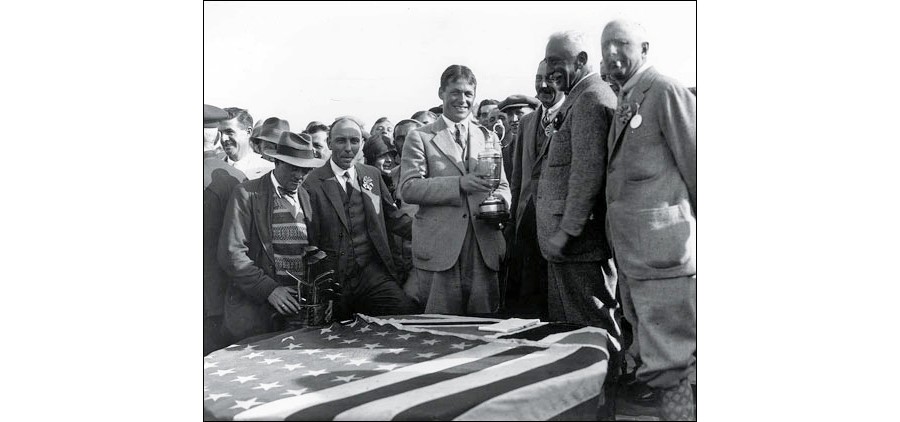
Augusta National touts the Jones / MacKenzie collaboration but the course we see today is a clear mixture of other contributors from the likes of Perry Maxwell, Robert Trent Jones, Sr., George Cobb, Jack Nicklaus, Tom Fazio, et al. Should the full listing of names and the specific inclusions provided also be listed in the club's playbill and via the CBS telecast?
CLAYTON: No – because it’s largely a Jones / MacKenzie routing. Allied with their concept of the golf they wanted to encourage -- that's the brilliance of the course. But it’d be nice for example for the commentators to have enough time to talk about Maxwell’s contribution to the 7th and the 10th greens, the history of Jones’ 16th or the contributions of the others.
CRAFTER: In some sense these other contributors are minor players on the bill, with the lead actors MacKenzie and Jones. They routed the course and the routing has stood the test of time. To my mind keep it simple and stick with the two collaborators.
MARZOLF: That is totally up to the club and only they could say. No need to credit the years of improvements to a small handful of names. That will only get larger in the many years to follow. The focus is on the challenge of the game, and the original principles of the Masters tournament that Jones envisioned.
FRY: In all honesty, the only people who care about this issue is those interested in golf course design. To the general public and those watching the Masters on television this will always be Bobby Jones' golf course with help from Alister MacKenzie. So, I don’t believe the dozen or so architects who have been involved with changes to the course over the last 80 years need to be mentioned and those that are interested can easily find the information if they search for it.
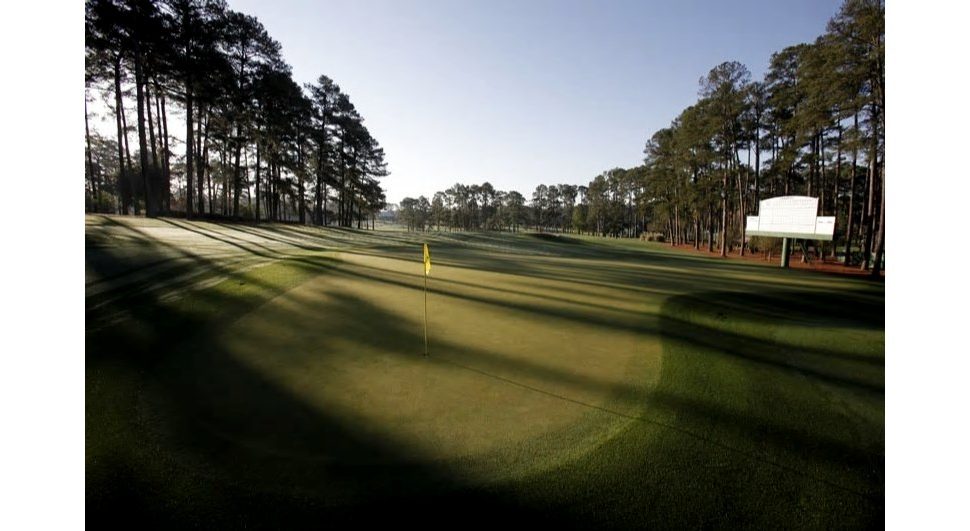
Jones and MacKenzie wanted Augusta National to become a parkland setting formulated on design aspects exemplified by The Old Course at St. Andrews. Does such a connection still hold true today?
FRY: Very little, if at all, is left because the ground game has been virtually eliminated. The original intention was to have the option to run balls on several greens but many of those holes added greenside bunkers where there were none when it first opened. Also several greens were built to resemble certain greens at St Andrews but all of them have changed to some extent over the last 80+ years.
CRAFTER: While the creation of Augusta National was based upon the ideals of The Old Course, MacKenzie and Jones knew they could not replicate it on rolling ground far from the sea in Georgia where the wind rarely blows to the degree it does at St. Andrews. They knew the Old Course so well, Jones through his many championship rounds upon it and Mackenzie as an R&A member who surveyed it for his famous plan, distilling the essence of its DNA and re-applying that to a very different site.
CLAYTON: The 7th green – an ode to the 18th at St Andrews is gone. The 13th with both its long second and demanding pitch poses the same vexing questions – all the way from tee to green- they both understood from The Road Hole.
One thing the original width gave them was the ability to make the shot from one side of the fairway quite different from the shot from the opposite side. The 11th was probably the best example -- it’s way too narrow now -- as would the 9th have been with the horseshoe green. This element of one side being quite different from the other is best exemplified at The Old Course.
MARZOLF: The ground contours of each course create the roll out of the ball and elements of luck still play a big part of the outcome. Knowledge of the course -- the lines of play, and where to land the ball, is the key at both Augusta National and St. Andrews.
FULLER: Having played the Old Course three times and Augusta National scores of times, I believe the greatest similarity in design aspects is greens complexes. The bold slopes in the greens and surrounds have similarities to the Old Course. If you are going to win a Masters your short game has to be spot on because of the green complexes.
The stories change. The challenge does not.
— The Masters (@TheMasters) March 20, 2021
Returning in April. #themasters pic.twitter.com/wt59iRM0rB
The Masters is run entirely by the Augusta National Golf Club. Should the club have gone ahead -- even in a solo fashion -- in mandating a limited distance ball for the event instead of constantly moving ahead with tee extensions given improved club and ball technology?
CLAYTON: Absolutely – with the R&A and the USGA they are the hope on the side when it comes to equipment regulation. No equipment manufacturer would dare sue Augusta – or even threaten it - for requiring at least one of them to make a tournament ball. Players figure out how to play at altitude where the ball goes 10% further and they’d soon work out how to play a 10% shorter ball.
FULLER: If anything is to happen to the golf ball it has to be orchestrated by the two primary governing bodies, USGA and R&A. The goal should be to create a ball that would preserve the design integrity of many Golden Era courses / venues and allow major championships to continue being hosted at these courses. In many instances these venues have run out of space to lengthen the course. The only option left is very narrow fairways and very penal rough, which in my opinion equates to boring golf on TV.
MARZOLF: The traditions of the game are important. A break from the rules governing the sport would not be in keeping with the spirit of Bobby Jones. Alister MacKenzie in his book Golf Architecture stated that the course should be designed, with room behind the tees, for the future of the game.
FRY: This is a very complex question with no easy answers. Chairman Ridley stated creating a tournament ball would be very difficult to do but they would keep all options open. Over the last few decades they have bought more land so they can add distance as needed. I feel in the future that either technology will start to be dialed back or eventually Augusta will have to create their own ball for the Masters.
CRAFTER: You could certainly make that argument given their unique status in world golf, but in my view it would be a little pointless without the support of the USGA and the R&A. Augusta National has consistently lengthened the course over many years so they are as guilty in some respects as the two governing bodies, so perhaps the time for taking this particular leap has passed.
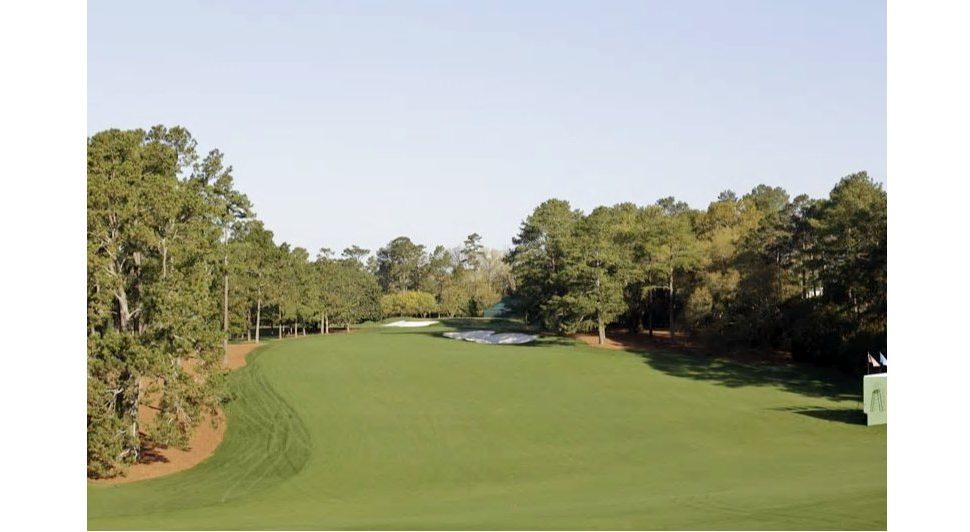
Favorite hole is –
MARZOLF: The 13th – the best par-5 in the world.
FRY: The par-3 12th is the greatest short hole in the world. It can be a three-club difference going for the left, middle or back right pin with danger lurking everywhere. Add in the pressure of playing in the Masters, constantly changing wind directions and it becomes one of the most difficult shots in golf.
CRAFTER: The 14th. A fabulous bunkerless hole with a devilishly wild undulating green -- still challenges the world’s best.
CLAYTON: The 13th – along with The Road Hole -- one of the two greatest holes in the game because of the multitude of questions they ask.
FULLER: My favorite hole is the short par five 13th. It has been said “golf is a game of slope”, This hole exemplifies the impact of slope on the player. We see the greatest players 190 to 210 yards from the green often find trouble as they are challenged with the ball on a slanted fairway slope, an awkward lie that requires near perfection to find the green.
84 years in the making. No score lower than this one. Dustin Johnson's record-setting 20-under-par 268 is engraved in history. #themasters pic.twitter.com/o5eovFvwCl
— The Masters (@TheMasters) March 24, 2021
Least favorite hole is –
FULLER: Today I would say the 7th. This green was originally designed to receive a short iron after a well-placed drive in a fairly narrow tee shot landing area. This hole has been lengthened to a greater degree than I believe the green is designed for.
CLAYTON: Probably the 7th – looks so disproportionately narrow for a course championing width.
CRAFTER: The 15th. With water stretching right across the front of the green the strategy is overly simplistic. Drive it as far as you can so you give yourself the most lofted approach to the green.
FRY: First off, I don’t think there is a bad hole at Augusta National but my least favorite hole is the 17th. It’s straightaway, plays uphill with really nothing to aim at off the tee. It is pretty uninteresting but plays difficult if the hole is playing into the wind.
MARZOLF: The par-5 2nd – the tee shot is awkward, but the green is fabulous.
If you could change one thing unilaterally at Augusta National - what would it be and why?
FRY: Bring back the short cut of grass everywhere so only well-struck shots end up in the best area to hit your approach shots into the green with others continuing to roll into the pine straw areas. The tighter the grass can be mowed so balls roll farther makes the course far more challenging, in my opinion.
CLAYTON: That they not only hold the Masters but a Women’s Masters – with the aim in making one of the three most important tournaments in women’s golf. It’s a lot to ask of a private member’s club, but it’d be hugely consequential for women’s golf. It may not be a big deal for a while but a century from now seen as one of the game’s most foresighted decisions.
FULLER: During my tenure as golf course superintendent we had minimal rough -- only over tree roots -- along the very edge of tree roughs. I would like to see them go back to wall-to-wall fairway cut and sand cap the entire fairway area to create fast, firm conditions, resulting in more ball roll. Strategically I believe it is more challenging to control tee shots that roll out -- often into trouble. Of course, that is contrary to narrow fairways and 4 inches of rough -- as often seen at U.S. Open sites -- in an attempt to control score and maybe offer more challenge to long ball hitters -- maybe. I am just glad Augusta National has never gone to extreme rough.
MARZOLF: The only answer is to say a big “thank you" to Augusta National for creating the best brand in all of sport.
CRAFTER: Restoring the MacKenzie character to the bunkers as today they are just oval shaped blobs.
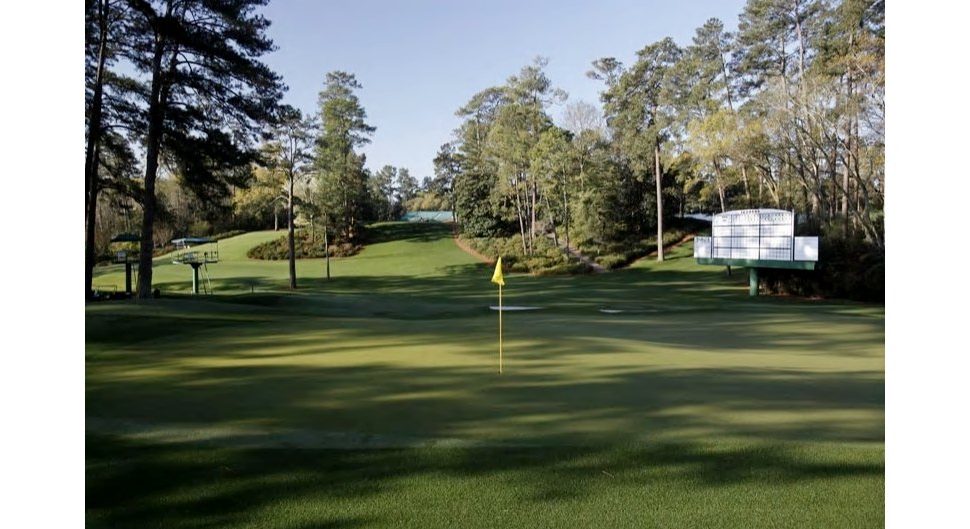
The Masters is the youngest of the four major events -- in order of importance from most significant to least how would you rate the events?
MARZOLF: The Masters is the finest tournament held all year. The Open Championship holds true to form and is a world favorite. The PGA Championship has come a long way to create a fair set up on great golf courses. The US Open has unfortunately hurt its own stature of late, with past “over the line” course set ups and inconsistent ruling applications. Let’s all pray for consistent recovery for the USGA.
FRY: Number one is the Masters, then the British Open, the US Open and then the PGA Championship.
CRAFTER: The Open Championship, Masters, US Open and PGA Championship.
FULLER: Let’s assume I am a tour player for a moment. I would cherish the green jacket ahead of other trophies. The Masters tradition and Bobby Jones history behind the venue and tournament is really special. My next is the British Open. The UK courses and weather conditions are so contrasting to Augusta National. I love that the controlling entities don’t seem to worry about score. If weather is mild and turf soft, scores may go quite low; if fast, dry and windy, scoring is more challenging. The historical value of the Claret Jug is priceless. After all, it is the home of golf. After those two, the U.S. Open and PGA Championship in the 3rd and 4th positions respectively.
CLAYTON: In order --The Open, U.S Open, Masters and PGA Championship. The PGA would move up significantly if every four years it was played outside of the United States – but good luck selling that one. The rest of the world revere the other three but have less admiration for the ‘4th major’ The Australian Open tennis proves a ‘4th major’ can be reinvented and bought up to the reputation of the other three.
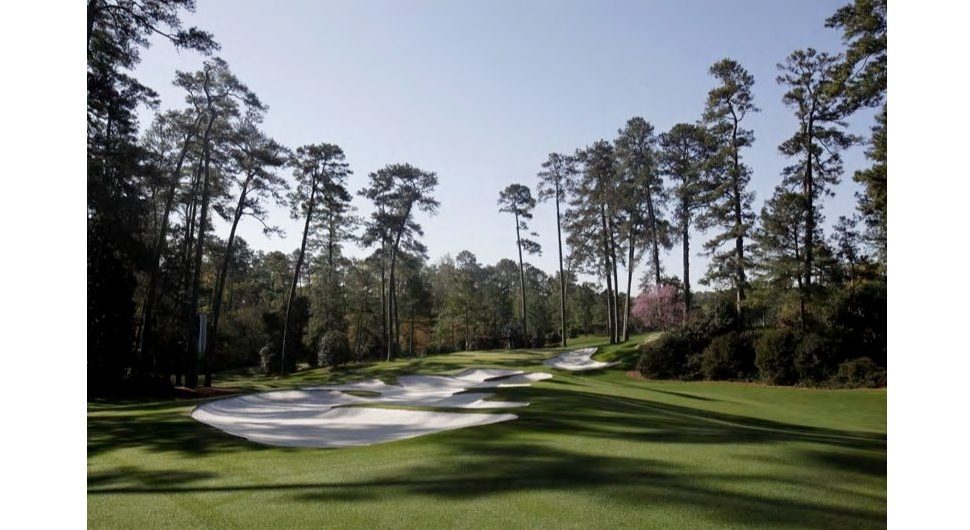
Fred Ridley has been chairman of the club since 2017. What letter grade would you give him for his stewardship of the Masters?
FRY: A. He was obviously a good player in winning the 1975 U.S. Amateur and he understands keeping Augusta up to date with the athleticism of today’s players, modern golf club and golf ball technology. He constantly says they will keep all options open concerning adding length to holes such as the 13th because Bobby Jones wanted it to be a huge decision to go for the green there and with medium and short irons. Its obviously isn’t a tough decision. He's also discussed their own tournament ball even though he recognizes that would be tough to do. To me, a very well-spoken and progressive leader that has Augusta National under great leadership.
FULLER: A+. I was so appreciative watching the Masters on TV in November 2020. Having worked there I know the agronomic challenges, and know they went out on a limb for the good of the game. I felt sure the fairways would be fine -- 50% bermudagrass & 50% overseeded ryegrass. Bentgrass greens in the south immediately following the hot summer months is in a weakened -- shallow roots -- condition. The root system does not recoup until late winter to spring, when it matures fully. Forcing championship greens speed in mid-fall is risky, but thanks to a great agronomic team they pulled it off.
CRAFTER: I haven’t studied his stewardship too closely but from a distance -- B+.
MARZOLF: Congratulations to Chairmen Ridley for The Augusta National Women’s Amateur. The spirit of inclusion and fairness to all who love the game is sincerely evident in this grade A+ leader.
CLAYTON: From afar it seems his stewardship has been very responsible and he seems to be a supporter of a revised ball. He’d move it to A+ if he hired his friend Ben Crenshaw and gave him, and Bill Coore, a free hand with the golf course. The shape of the bunkers MacKenzie drew as a part of his original green plans were full of character and interest – much more so than the generic shapes we see today. And, if anyone could be trusted to recreate the intention, spirit and character of MacKenzie and Jones it’s Bill, Ben and their ‘boys’.
Ultra-fast green speeds are the hallmark of Augusta National. Are speeds in excess of 13 on a Stimpmeter needed for even championship golf and how close a margin is there between a clear demonstrated skill in putting and simply being lucky when confronted with such situations?
FRY: Obviously speeds beyond 13 are not needed but with slower speeds on greens they would need to be heavily contoured to help defend a course. I think it takes great skill putting greens that putt very fast or greens that putt slower; it’s just a different skill. I definitely don’t think being a good or great putter involves luck it definitely is a skill.
MARZOLF: Americans are overly focused on fast green speeds as a formula element for great golf. That said, when the greens are as smooth and true as Augusta --, speed is your friend that allows exciting long putts made and testing come back five footers.
CLAYTON: Having putted Royal Melbourne for years with its MacKenzie greens running at 13, 14 and even quicker it always seemed excessive. Brilliantly contoured greens – and Augusta absolutely qualifies in that category – should be demanding enough to putt at 11 or maybe 12.
FULLER: Fast firm greens offer the ultimate challenge at Augusta National. Fairways are wide, rough is not a significant issue, and tour players are exceptional at bunker play. Top speed greens -- especially if Mother Nature favors firmness -- is the best defense. The key is pin positions, something Augusta National is exceptionally careful to choose fair locations. If you miss on the wrong side of a pin, up and down is extremely challenging, and bogey or even double bogey can come into play.
CRAFTER: When greens get too fast the putting becomes a lucky dip but I think the Masters have managed to tread that fine line between what their green contours can sustain as far as green speeds. I think they have the balance right.
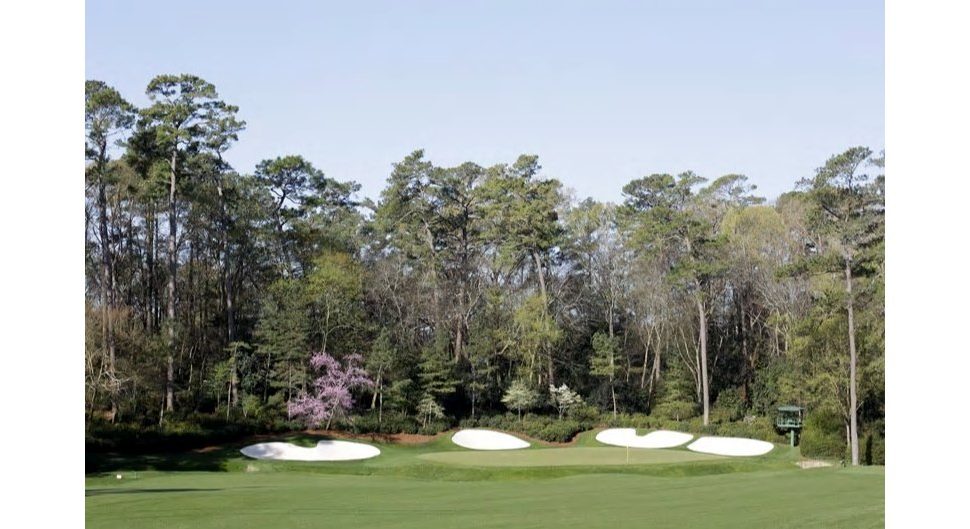
The five most consequential designs in all of golf are what?
CRAFTER: In order -- The Old Course at St. Andrews, National Golf Links of America, Royal Melbourne West, Pine Valley and Muirfield.
FRY: St. Andrews, Augusta National, Cypress Point, Sand Hills and Shinnecock Hills.
MARZOLF: Royal Melbourne, Cypress Point, The Old Course at St. Andrews, Augusta National, TPC Sawgrass.
CLAYTON: Does The Old Course qualify as a ‘design’ or simply a course that evolved? It’s definitely the most consequential course in the game.
The others -- National Golf Links of America. America’s first great course and one clearly standing the test of time – the hardest test of them all. Royal Melbourne – the best course in the Southern Hemisphere and one of the very best in the world. MacKenzie showed Australia world-class golf and it spawned the great collection of Sandbelt courses. Sand Hills – because it gave others the confidence to take a chance on remote golf and some of the game’s best courses have been the result. Pine Valley – the one course proving building 18 great holes is possible.
FULLER: The Old Course at St. Andrews, Royal Melbourne, Muirfield, National Golf Links of America, Augusta National, Pine Valley -- sorry that's six. But I can think of others, like Shinnecock Hills, Cypress Point and Royal County Down.
***
The Participants
Tom Marzolf
Senior Design Associate
Fazio Design
USA
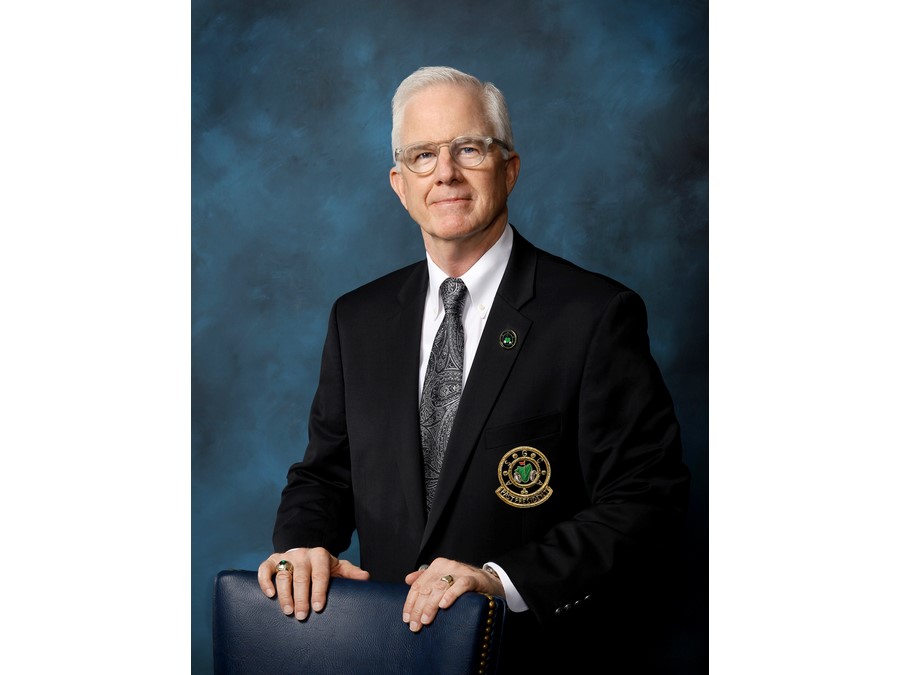
A member of the European Institute of Golf Course Architects and the American Society of Golf Course Architects ( Past President , ASGCA 2005-2006) .Has worked 37 years for Fazio Design and helped design 82 new Golf Courses with Tom Fazio. He has been a consulting architect for 4 U.S. Opens, 3 PGA Championships, 3 U.S. Women’s Opens and 4 LPGA Championships.
Michael Clayton
Partner
Clayton, DeVries and Pont
Australia
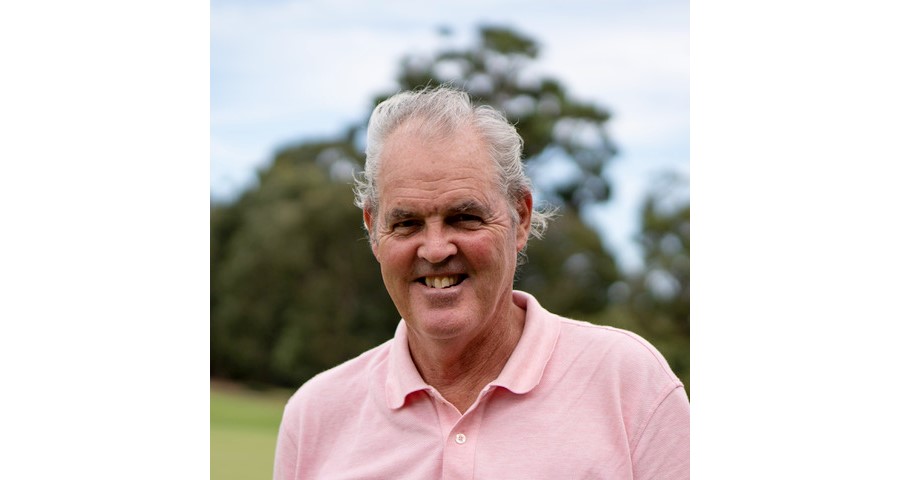
Started as a caddy who quickly morphed into a junior player, then amateur golfer and finally a pro who played the European Tour for 15 years. Along the way I added writing which lead to golf course design– and I occasionally go back to caddying. I’ve loved every part of it. www.cdpgolf.com
Neil Crafter
Principal Architect
Crafter & Mogford Golf Strategies
Australia
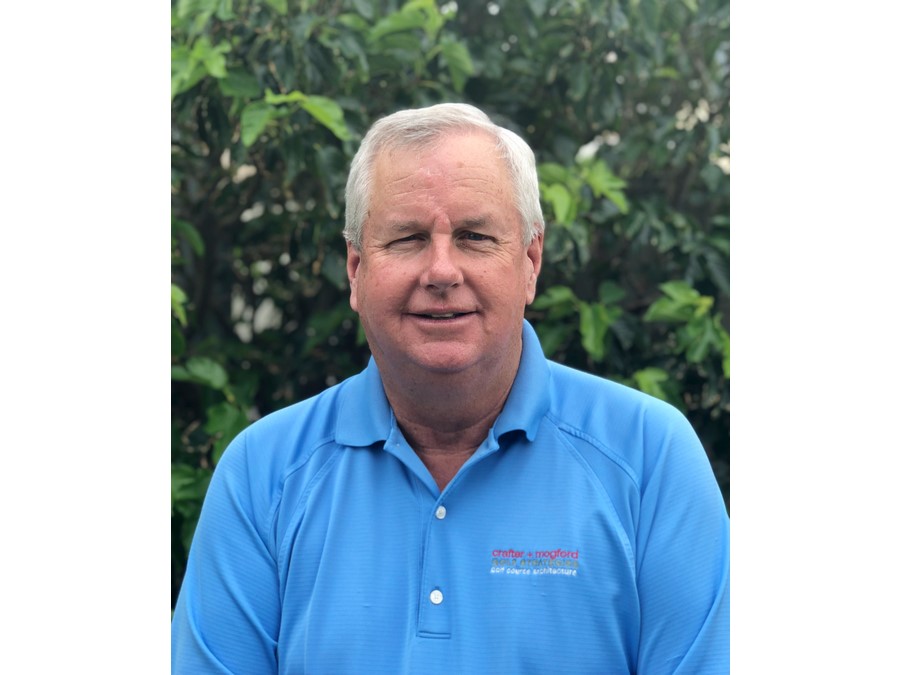
A highly credentialed amateur golfer who represented Australia four times in his career, and after graduating with a degree in architecture worked with his golf professional father Brian Crafter, transitioning to a career as a golf course architect. Has 30 years' experience working as a golf architect and has a long-held interest in the life and works of Dr. Alister Mackenzie. He is the principal researcher behind the "Dr. Alister MacKenzie Chronology" project and has nearly finished writing his book on the golf courses of Dr. MacKenzie. www.golfstrategies.com.au
Billy Fuller
President
Billy Fuller Golf Design
USA
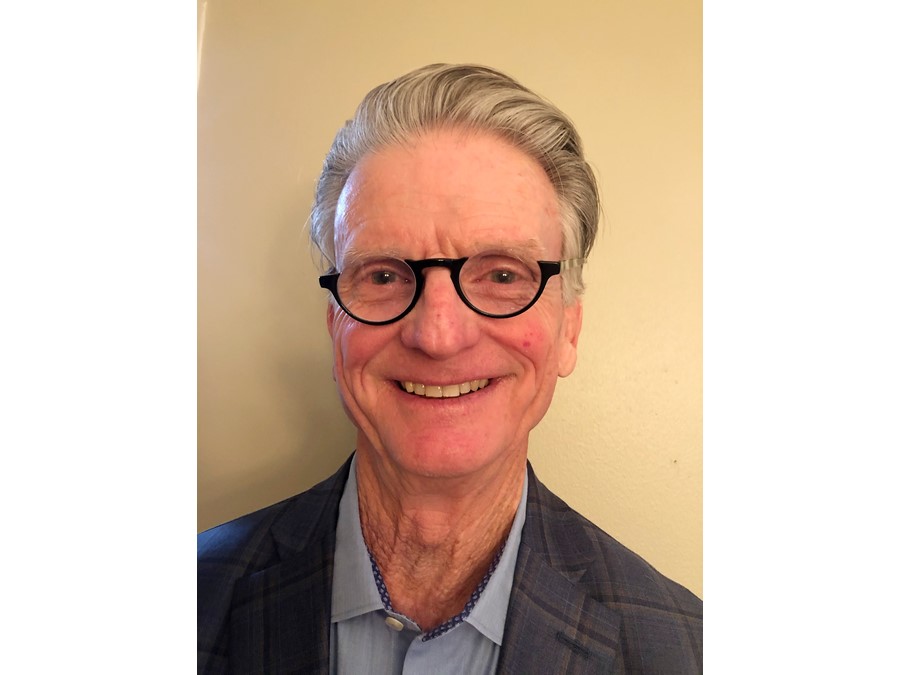
Spent 15 years as golf course superintendent (1981-86 at Augusta National Golf Club); 1986-2006 design associate with Bob Cupp; Cupp Design, Inc. -- experienced design of 100-plus golf courses across North America, Canada and England. Formed Billy Fuller Golf Design in 2006 and completed 1 new course and 25 golf course renovations. www.billyfuller.com (under renovation).
Dana Fry
Principal
Fry Straka Global Golf Design
USA
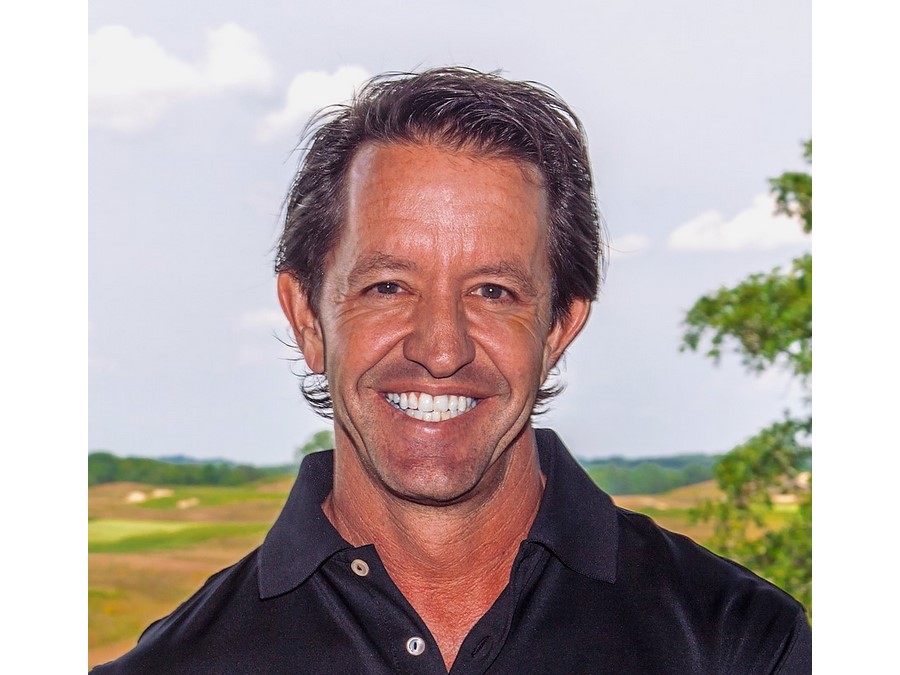
Since 1093, with a background in formal training and artistic design talent forms the consummate mix of practical and aesthetic creativity Fry devotes to the worldwide endeavors of Fry/Straka Global Golf Design. Among his most heralded efforts including Erin Hills, site of the 2017 U.S. Open, Devil's Paintbrush, Calusa Pines, Shelter Harbor Golf Club and Union League National GC. www.frystraka.com



